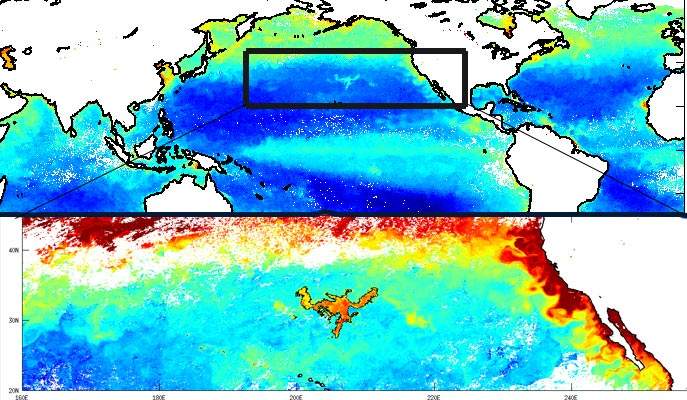Are you a journalist? Please sign up here for our press releases
Subscribe to our monthly newsletter:

They produce around half the oxygen we breathe and absorb carbon dioxide from the atmosphere, as well as forming the base of the ocean’s food chain. So it’s no wonder that the single-celled organisms called phytoplankton are a hot topic of research: Their health is essential for the health of the planet. Going against the flow, Weizmann Institute of Science researchers went looking for evidence of the giant phytoplankton blooms – so large they can be seen from space – not in the nutrient-rich waters in which they are normally observed, but in so-called “ocean deserts.” What enables such blooms to occur, as they sometimes do, in the waters where food is normally scarce? The findings of the study appeared in Nature Communications.
Prof. Ilan Koren of the Institute’s Earth and Planetary Sciences Department explains that the conditions that produce phytoplankton blooms are sunlight, nutrients and the right flow of water in the ocean. Blooms in the nutrient-poor regions were thought to be the result of sporadic “mixing” events in which nutrients from the ocean’s depths are injected into the so-called photic layer. This layer, from just under the surface to about 100 meters down, is the region where sunlight penetrates and thus photosynthetic organisms like phytoplankton are able to live.
The vertical streams that bring water and nutrients from the deep have been well studied but Koren and Dr. Yoav Lehahn of his group looked, instead, at horizontal flows that occur within a narrow layer, 20-30 meters deep. This “optimal layer” is less than one percent of the ocean’s depth, but the currents in this layer affect the food delivery system by thinning out the nutrients that reach it. So on the one hand, there is a rich, but sporadic source of food coming up in packages from the depths, and on the other, there is the dilution caused by the horizontal flows beneath the “desert” surface. Koren explains the situation of the phytoplankton in these regions: “The phytoplankton must make use of the nutrients when they are available. The food delivery arrives at the optimal layer in a concentrated package, but we think that it is the delicate balance between the mixing and the dilution caused by the flow that moves these nutrients horizontally in the water that created the huge bloom we observed persisting on the surface for several months.”
To understand the process, Lehahn developed a method of turning the “still” information of satellite images and data into “moving pictures.” To do so, he and the research group developed a theoretical model that could incorporate both the ocean currents and the phytoplankton ecosystem, satellite images and the physics of water dynamics. “The system we developed can track the events taking place in a body of water as it moves through space and time,” says Lehahn.
Also participating in this research were Shlomit Sharoni, a research student in the Earth and Planetary Sciences Department; Prof. Assaf Vardi of the Plant and Environmental Sciences Department; Dr. Francesco d’Ovidio of Paris University 6; and Dr. Emmanuel Boss of the University of Maine.
We went looking for ‘blooms in the desert’ – in the most lifeless parts of the ocean
The findings of the study suggest that the delicate combination of mixing and dilution that takes place through the horizontal flow provides the optimal balance that, on the one hand, enables the phytoplankton to grow using the available nutrients and sunlight and, on the other, protects them from overgrazing by the zooplankton that eat them. Such balances can teach us about the way that phytoplankton blooms grow in the other areas of the ocean, and it is thus relevant to the existence of the entire marine ecosystem. “We went looking for ‘blooms in the desert’ – in the most lifeless parts of the ocean,” says Koren. “The insights we gained from this study can help us understand what takes place all over the ocean.”
Just as Israeli pioneers aimed to “make the desert bloom,” could humans use this knowledge to create blooms in the “dead” parts of the ocean? Although the study did not address this question, Koren says that it could help inform the projects of those geo-engineers who propose growing phytoplankton on a large scale to “green” the oceans’ deserts and lower the levels of atmospheric carbon.
Transition from patches to bloom: Each frame in this animation is a composite of eight consecutive images from three satellites (MODIS-Aqua, MODIS-Terra and MERIS), showing chlorophyll on the ocean’s surface. Arrows show surface velocity vectors. Colorbar shows the logrithmic prorgession of surface chlorophyll concentrations
Prof. Ilan Koren's research is supported by the Bernard and Norton Wolf Family Foundation; and Scott Eric Jordan.